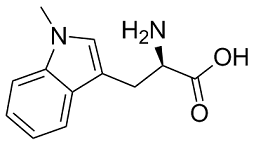This could be due to the late expression of Opsin-driven Cre in already differentiated photoreceptors, which limits our ability to investigate the role of Ep300/ Cbp in early photoreceptor differentiation from postmitotic precursors. Future studies using an early photoreceptor gene promoter to drive Cre expression will address whether either p300 or CBP alone is required for early photoreceptor development and if they play distinct functions in this process. Such studies are important for understanding the rod/cone dystrophy phenotypes of Rubinstein-Taybi syndrome, a disease associated with heterozygous CBP or Ep300 mutations. However, the present study has provided some hints of distinct roles for p300 and CBP in photoreceptor terminal differentiation: Although one copy of either Ep300 or Cbp essentially prevents the R-DCKO phenotype, mice expressing a single WT copy of Cbp show slight defects in rod morphology, function and gene expression, suggesting that p300 may have functions in photoreceptor maturation and maintenance that CBP cannot fulfill. In this regard, a recent study using a glioma-derived cell line showed that p300 and CBP each binds some unique target gene promoters in addition to the numerous targets they share. Even when both factors bind and regulate the same gene in a given cell type, such as aA-crystallin in newborn mouse lens fibrocytes, they have been found differentially distributed along the locus, suggesting distinct regulatory mechanisms. The condensed, transcription-poor heterochromatin is organized in the central area of the rod nucleus. The less condensed euchromatin containing transcription factors, activated RNA polymerase, splicing machinery and nascent RNA AbMole GSK 650394 transcripts are all localized to the nuclear periphery, indicating that this is the site of active gene transcription. The mechanisms responsible for establishing and maintaining this unique nuclear organization are being elucidated. In non-photoreceptor cells, two apparently parallel interactions involving nuclear Lamin A/C or the Lamin B receptor anchor heterochromatin enriched in LINE elements to the nuclear periphery. In addition, the process may involve the Retinoblastoma family of pocket proteins, which are active in developing mouse rod photoreceptors at the time when nuclear reorganization occurs. Heterochromatin condensation also fails to occur in the absence of RB. The RB protein directs pericentric and telomeric heterochromatin formation as well as recruiting histone deacetylases to active gene promoters to silence transcription. Longworth and Dyson suggest that RB functions as a “master regulator of chromatin structure��; expression of Rb and its mouse homologs Rbl1/p107 and Rbl2/p130 were unaffected in the microarray assays as expected if CBP/p300 are downstream effectors. Since rod nuclear chromatin also decondenses in mice with defects  in STAGA complex, transcription coactivators with histone acetyltransferase.
in STAGA complex, transcription coactivators with histone acetyltransferase.